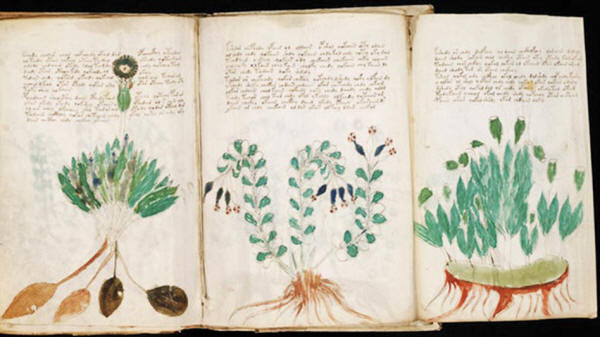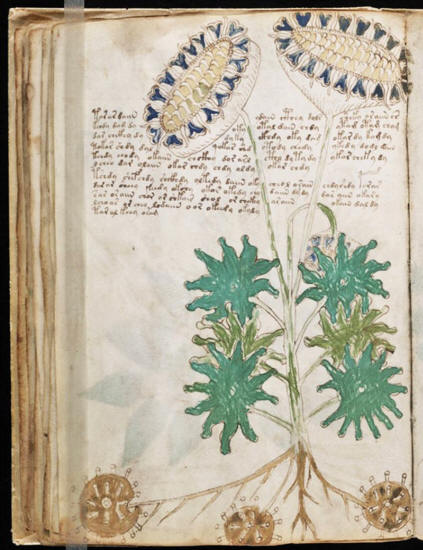|
from
NewAtlas Website are claiming to have created an algorithm that can decode the mysterious Voynich manuscript. (Credit: Public Domain)
Dated back to the early 15th century, this manuscript was written in an unknown language that many have struggled to decipher over the years.
The mysterious codex has
been the source of dozens of different hypotheses, from it being
either a hoax or gibberish to the suggestion it is written in a
complex cipher yet to be cracked by anyone.
Nicholas Gibbs claimed the manuscript was actually written in an abbreviated version of Latin and translated it as a women's health manual.
Critics of Gibbs' interpretation pretty quickly piled on the critiques suggesting his work combined elements of information we already knew with translations that were fundamentally grammatically incorrect.
from the mysterious Voynich manuscript
The latest attempt to decode the mysterious manuscript comes from Greg Kondrak and Bradley Hauer at the University of Alberta.
The duo began by using samples from 400 different languages to algorithmically identify the underlying language of the manuscript.
Despite initially suspecting the manuscript was written in Arabic, it turned out the algorithms concluded Hebrew was the most likely language.
Hypothesizing the manuscript was encoded using alphagrams (alphabetically ordered anagrams), the duo then developed an algorithm that could decipher the text.
Taking a closer look at the system's output the duo concluded that the first line of the Voynich manuscript, translated into English after a couple of spelling corrections, reads as,
Kondrak suggests that ancient Hebrew historians would still need to work to interpret these translations further as the syntax is quite clearly strange and unusual.
Early responses to the duo's work from Voynich specialists haven't been positive according to Kondrak.
from the mysterious
Voynich manuscript
The researchers admit that the Voynich text, as an input ciphertext for their algorithms, is too noisy to generate a fluent output. This means the ultimate value of the work is essentially limited to single word translations.
One short section
analyzed in the study reveals the Hebrew words for 'narrow',
'farmer', 'light', 'air', and 'fire', leading the duo to suggest
that hypotheses the manuscript is a medieval herbal guide could be
accurate.
This new study adds yet another hypothesis to the scores of Voynich claims out there.
Kondrak and Hauer plan to continue refining their algorithm and hope to apply it to other ancient manuscripts. The study (Decoding Anagrammed Texts Written in an Unknown Language and Script) was published in journal Transactions of the Association for Computational Linguistics.
|




